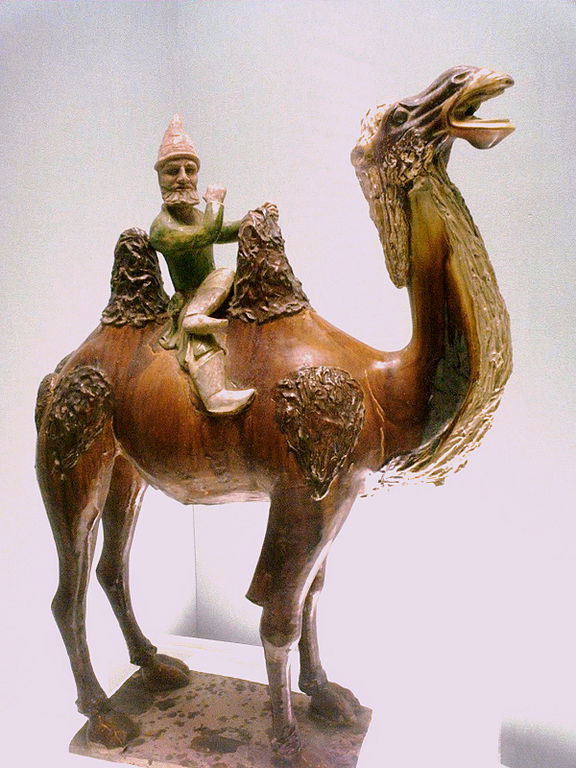The Historic Silk road
With this page I want to provide an interactive map of the historic Silk Road.
It outlines the main routes, mountain passes and cities that made up the historic Silk Road network.
I also give some context about the history of the Silk Road and point to helpful resources for further reading.
The term Silk Road is being used more frequently in recent years. Among the reasons for this is an increased interest in tourism in Central Asia as well as the Belt and Road initiative of the Chinese government.
While it is uses broadly as a catchy term for “all things Central Asian”, it more specifically describes a network of routes through the area.
Central Asia and the historic Silk Road
This land between the endless expanse of the Steppe in the North and the three major civilizations of Persia, India and China is dominated by the highest mountain ranges in the World and major deserts. It is far more however than an area on the margins of World history.
At the heart of this historic Silk Road is the Tarim Basin in what is today Western China. It was this region, around the Taklamakan Desert and surrounded by the mountain ranges of Tian Shan and Kunlun that the 19th century German geographer Ferdinand von Richthofen had in mind when he coined the term Silk Road.
It implies trade between central China with its silk industry, the oasis cities of the Tarim Basin and beyond across the mountains to Samarkand and Persia. Pictures of caravans of camels come to mind, navigating a barren landscape and carrying precious goods to far away lands.
The other large region of the Silk Road area is Sogdania and the Fergana Valley with the major city of Samarkand. While the Tarim Basin was more influenced by the Chinese, Sogdania was more under Persian influence.

It symbolizes trade, cultural overlap and the arid landscape of the historic Silk Road.
(published by PHG on English Wikipedia, Westerner on a camel, marked as public domain, more details on Wikimedia Commons)
Interactive Map of the Historic Silk Road
– Map markers have pop-up windows with additional information. – Map controls: buttons for zoom and fullscreen in top left – keyboard zoom with +/- keys as well.
(Feel free to click on the map markers. Pop-up windows will open showing additional information.)
Trade along the Silk Road
The historic Silk Road however was not a road in the sense of a built and maintained structure but a shifting network of trails in the arid landscape of Central Asia. These trails converged on oases for stocking up on water and on mountain passes.
Trade was conducted with caravans of pack animals, mostly Bactrian camels and donkeys. These were mostly small caravans of groups of local merchants to traveled to the next oasis town.
Most of the trade interactions were thus also local and goods made their way along the Silk Road by a chain of exchanges. While there were exceptions like the Sodgian merchant networks, the image of a caravan bringing silk from China to Persia or even ancient Rome is misleading.
It helps to see the cities of the historic Silk Road for what they were: large communities with their own demand in goods and own culture. Over the centuries they were more or less independent; pending on the strength of the adjacent large empire (China and Persia respectively).
In times when the Chinese Empire extended its power over the Tarim Basin, there was more traffic through the Gansu Corridor to Chang’an and central China. Silk flowed into the area as it was as a currency (alongside with silver and grain) by the Chinese authorities to pay soldiers and officials. Larger, state sponsored caravans became more frequent. Jade from Khotan and horses for the army were among the goods that were brought back to China. Horses were traded with the nomadic people from the Steppe and were over centuries the an important import for China as well as India.
There are three major period, when large parts of the historic Silk Road were under the rule of a single empire:
-
Han dynasty 1st century BCE
-
Tang dynasty 7th century CE
-
Mongol Empire 13th-14th century CE
Ideas travel the Silk Road
The exchange of ideas along the network had a much greater impact than the long distance trade, which is often associated with the Silk Road.
Religion and technology are shown as two broad categories of ideas.
Religious ideas moved along the Silk Road in early times and the communities along the way frequently adapted to new ideas throughout history.
Buddhism has a long tradition and strong following in China, Korea and Japan. Buddha himself lived however in India and that is where the religion itself developed.
The ideas of Buddhism were brought along the trails of the historic Silk Road to the Tarim Basin in the 2nd century CE and then further East to China by Buddhist monks.
Khotan and Kucha for example were Buddhist states until the arrival of Islam. Near Kucha are the famous Kizil Caves with Buddhist murals.
Christianity as well traveled East along the Silk Road. The Nestorian church was well established in China in the 7th century. Judaism arrived China around the same time with Persian Jewish merchants.
Two religions, which no longer have a large following can be seen as “Silk Road religions”: Manichaeism and Zoroastrianism.
Manichaeism developed in Persia and became state religion in the Uygur Khaganate in the 8th century.

The left monk is probably from Sogdania, whereas the monk on the right is ethnic Chinese.
This picture symbolizes the cultural mix on the Silk Road and the transmission of religion.
(of the paintings – Unknown. Of the book, Albert von Le Coq., Central Asian Buddhist Monks, marked as public domain, more details on Wikimedia Commons)
Zoroastrianism developed before 1,000 BCE and was the state religion in the Persian Empire for over thousand years until the conversion to Islam.
Therefore, it dominated the Western part of the historic Silk Road including Sogdania. Sogdian merchants in particular spread this religion all the way to China as they established trading colonies in the larger oasis cities along the route.
With the Muslim conquest of Persia in the 7th century, a centuries long religious transformation along the Silk road started that led to the domination of Islam in Central Asia as we know it today.
Samarkand and Bukhara in historic Sogdania are well known for their Islamic World Heritage and the Uyghurs of the Tarim Basin are Sunni Muslims.
Inventions that changed the World
Apart from religion, technology spread along the trails of the Silk Road. The Chinese secrets of silk, paper and gunpowder are three examples that changed World history:
- While Chinese silk was traded westwards, the secret of making this textile slowly made its way out of China as well. Cities in the Tarim Basin had they own silk industry in the 1st century CE, northern India around the 3rd century and the Byzantium Empire by the 5th century
- Paper making was another Chinese invention that spread West. The Muslim World came across paper during the conquest of Chinese controlled Sogdania in the 8th century. The first Muslim paper mill operated in Samarkand and paper soon was known throughout the Islamic World. Paper was essential for the spread of knowledge. The Islamic World was well advanced compared to Europe during that period and the availability of paper played a part in that.
- Gunpowder, as a final example, was invented in China in the 9th century CE. When the historic Silk Road opened during the Mongol conquests in the 13th century, firearms appeared almost at the same time in India, the Middle East and Europe. European countries then improved firearms and used them to dominate the World in the following centuries.
Conclusion
The network of the historic Silk Road helps to understand the geography and history of Central Asia, an area that is somewhat neglected in the traditional Western view.
This is completely unjustified as Central Asia is fascinating from a historical, cultural and geographical perspective.
I can recommend the books below for further exploration of this topic.
– Peter Frankopan, The Silk Roads, A New History of the World, Bloomsbury, 2015
This is a book about World history. But expect to see topics you think you know (Imperialism, Cold War, etc) from a different perspective – that of Central Asia. Highly recommended.
– Valerie Hansen, The Silk Road – A New History, Oxford University Press, 2012
Valeria Hansen looks in detail at a number of archeological sites in Central Asia and explains how the artifacts found there tell us about the historic Silk Road. A fascinating book.
– James A. Millward, The Silk Road – A Very Short Introduction, Oxford University Press, 2013
150 pages in pocket book format. A highly condensed and informative read.
Then sign up for our free email newsletter to get quarterly updates right to your inbox.

